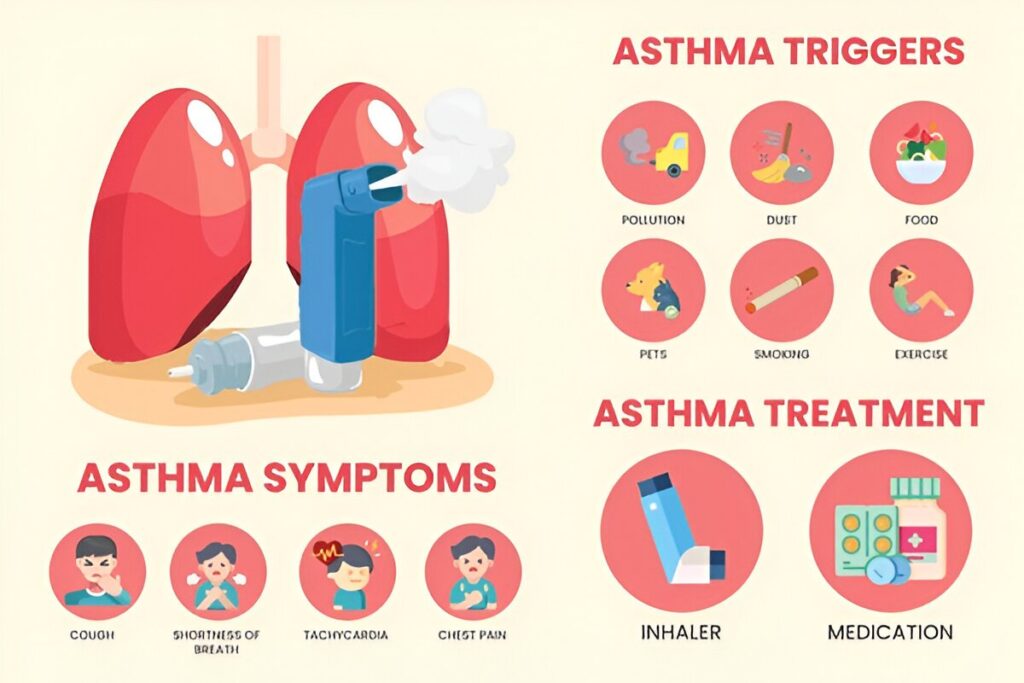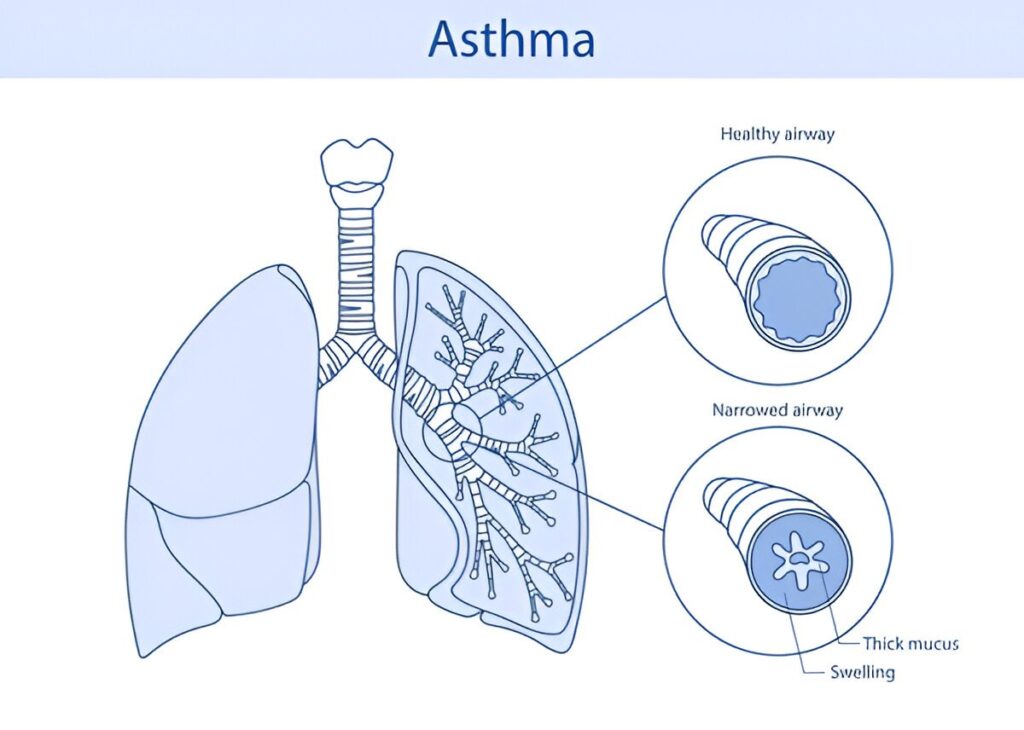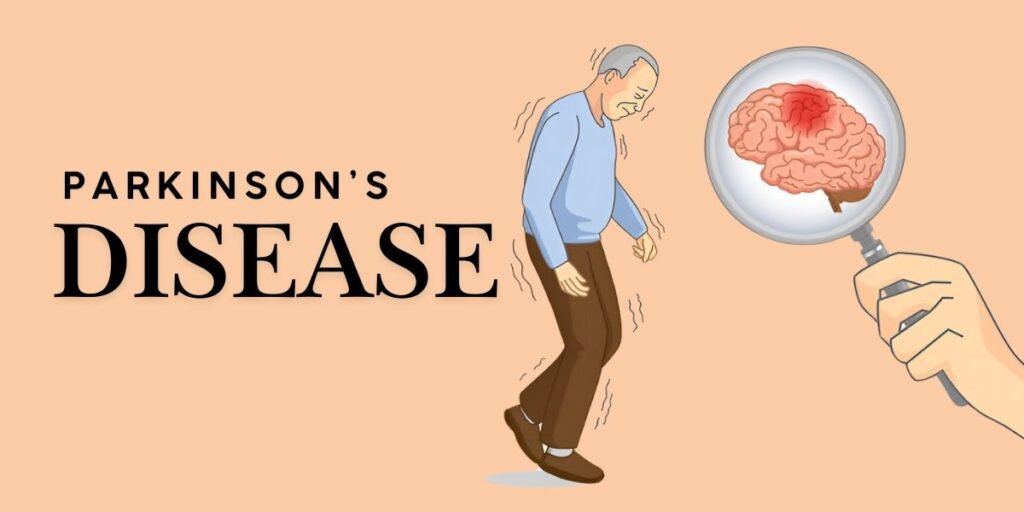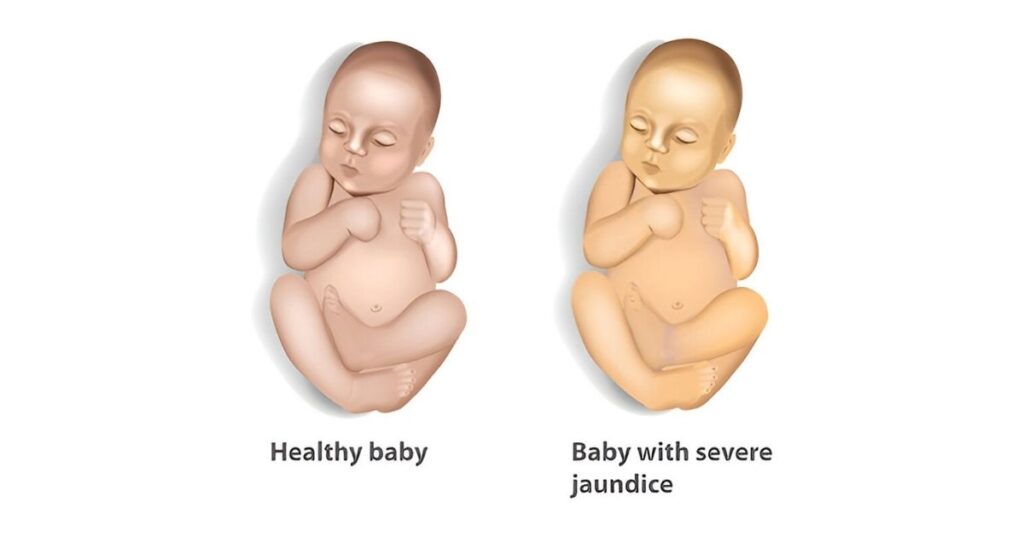People suffering from asthma have sensitive and swollen airways that become clogged and narrow with sticky mucus. This usually occurs as a response to several triggers. Pollution, modern hygiene standards and genetics are commonly thought to increase the risks of asthma.
To manage asthma, proactive measures and care tips must be followed. These may include:
- Having a family history of atopic conditions or asthma
- Having atopic conditions including allergy-related problems like eczema or food allergies
- Previously having suffered from bronchiolitis, a common lung infection in children
- Exposure to tobacco smoke in childhood
- Conditions where the child’s mother smoked during pregnancy
- Premature delivery that occurs before 37 weeks
- Being born with a low birth weight

Common Asthma Triggers
In many cases, asthma symptoms can happen in response to triggers. These may include:
- Infections like cold and flu
- Allergies from dust mites, pollen, feathers and animal fur
- Pollution, fumes and smoke
- Medicines, particularly different anti-inflammatory painkillers like aspirin and ibuprofen
- Severe stress and other similar emotions
- Weather conditions, such as sudden changes in temperature, heat, thunderstorms, humidity, cold air and wind
- Mold or damp
Knowing your triggers is important as this will help you to avoid them and subsequently control your asthma symptoms.
Common Symptoms of Asthma
Asthma symptoms usually vary from one person to the other. Some people may have infrequent asthma attacks with symptoms only at specific times while others may have symptoms all the time. Effect of relaxation-breathing training on anxiety and asthma signs/symptoms of children with moderate-to-severe asthma: a randomized controlled trial. Some of the most common signs and symptoms of asthma may include the following:
- Chest pain and tightness in the chest
- Shortness of breath
- Wheezing when exhaling. This is one of the most common signs of asthma in children
- Trouble sleeping which may be caused by wheezing, coughing and shortness of breath
- Wheezing or coughing attacks that are worsened by the respiratory virus, like the cold and flu
- Your body is likely to indicate when your asthma gets worse. These indications may include:
- Asthma signs getting more bothersome and frequent
- Increasing difficulty breathing
- The need to use quick-relief inhalers more often
Certain individuals experience asthma symptoms that become more pronounced in specific circumstances. These may include the following:
- Asthma that is triggered by physical activity and is potentially exacerbated in cold and arid air.
- Asthma that is linked to workplace irritants, such as chemical fumes, gases or dust.
- Asthma that is provoked by airborne allergens like pollen, mold spores, cockroach remnants or particles of skin and dried saliva from animals.
Strategies to Manage Asthma

Create your personalized asthma management plan
Work closely with your healthcare provider to craft a comprehensive asthma management plan. Determination of personalized asthma triggers from multimodal sensing and a mobile app: observational study. This plan should encompass crucial information on effectively managing your asthma, providing you with a clear roadmap to maintain control over your condition.
Evaluation and monitoring of your asthma control
Stay attuned to common asthma symptoms like coughing, chest tightness, wheezing, restricted activity and fatigue. Maintaining a record of your symptoms empowers you to monitor your condition’s progression and ensures that you remain in control of your asthma.
Understand and follow your medication
A diverse range of medications are available to address asthma. Every individual’s asthma may be distinct and thus collaborate closely with your doctor and healthcare team to develop and follow a tailored medication plan that suits your unique needs.
Mitigate asthma triggers
Identify the specific triggers that exacerbate your asthma symptoms. By doing so, you can adopt straightforward strategies to either minimize your exposure to these triggers or avoid them altogether, contributing to the better management of your asthma.
Lifestyle Interventions to Manage Asthma
Prioritize sleep and relaxation
Recognize the pivotal role of sleep in overall well-being and make a conscious effort to prioritize quality rest. Establish a soothing bedtime routine, create a tranquil sleep environment, and strive for a consistent sleep schedule.
Sleep and allergic disease: a summary of the literature and future directions for research. Additionally, integrate relaxation techniques such as deep breathing, meditation, or yoga to alleviate stress and promote a sense of calm.
Maintain a healthy weight
Cultivate a commitment to maintaining a healthy weight that aligns with your body’s needs. Adopt a well-balanced diet and engage in regular physical activity to strike the right balance and support your body’s optimal functioning.
Replace unhealthy food choices with healthier alternatives
Shift your dietary focus from processed junk food to the vibrant goodness of fresh fruits, nutrient-packed vegetables, and lean protein sources like poultry, fish, and legumes.
Allergic diseases among children: nutritional prevention and intervention. Therapeutics and clinical risk management. By nourishing your body with these wholesome choices, you can fuel your vitality and fortify your immune system.
Incorporate physical activities daily
Integrate even a modest amount of exercise into your daily routine. Whether it’s a brisk walk, a bike ride, or a gentle yoga session, these activities contribute to enhanced circulation, improved mood, and heightened overall fitness.
Commit to regular medical check-ups
Adhering to a schedule of regular doctor’s appointments is pivotal in safeguarding your health. These appointments provide an opportunity for proactive health assessments, early detection of potential concerns, and guidance on maintaining well-being.
Adhere to your medication regimens
Follow prescribed medication routines diligently, ensuring that you take medications as directed by your healthcare provider. To prevent disruptions in your treatment plan, stay proactive by refilling prescriptions well before they are depleted.
Stay up-to-date with vaccinations
Maintain vigilance over your vaccination schedule, particularly for influenza and pneumonia. Vaccination of adults with asthma and COPD. By keeping your vaccinations current, you contribute to bolstering your immunity and shielding yourself from preventable illnesses.
Mitigate environmental allergens
On days characterized by high pollen counts and compromised air quality, exercise caution by keeping windows and doors closed. By minimizing exposure to environmental allergens, you can reduce the risk of exacerbating respiratory issues and promote overall well-being.




